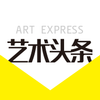分享到微信,
请点击右上角。
再选择[发送朋友]
或[分享到朋友圈]

Fusion and Split of Form and Meaning: Interpretation of Liu Yonggang’s ‘Character Sculptures’
Wang Ruiting, fellow of China Arts Academy specializing in western arts, famous critic
When I first saw Liu Yonggang’s large character sculptures, my first impressions were ‘standing characters, walking persons’ and ‘hieroglyphic characters, symbolic meanings’. The title ‘Embrace of Live’ indicates his infusion of ‘the message of love’ into his works. Feeling the symbolic love that was warm though not passionate, and that could hardly be conveyed in words, I wandered through the forest of his ‘character sculptures’ and sought the origin of the love in the logic of art history.
Chinese characters are the root of Chinese culture. They are the starting point of many contemporary artists’ journey of modern art. I even believe in the existence of a strong tendency of what I call ‘calligraphism’ in the contemporary circle of Chinese artists. Influenced by western deconstructionist art, many Chinese artists magnify certain features of Chinese characters or calligraphy and highlight particular elements. By loaning, deconstructing and reorganizing Chinese characters, they have created a great number of up-to-date works with distinct traits of national culture. But the same starting point may lead to different approaches and orientations. Some deconstruct the shapes of characters, some reshuffle their meanings, some reconstruct them, and some even take writing from two dimensions to performance art and conceptual art. Representative works are: Gu Wenda’s turning writing into meditation, aimed at revealing the Taoist aspect of characters; Xu Bing’s restructuring of characters, with emphasis on the double contradiction between their forms and meanings; Zeng Laide’s turning calligraphy into performing art, with stress on emotional experience in the behavior and action of writing; and Zhang Qiang’s turning writing into conceptual performance art, with stress on the contradiction between expressing and understanding.
Liu Yonggang turned characters into sculptures from two-dimensional characters into three-dimensional characters. That was a unique creation. You may regard his works either as sculptures or as devices. They inherit the pristine simplicity of the first Chinese characters and heroism of the Qin and Han Dynasties. The dazhuan-style character sculptures emanate a profound and powerful masculinity.
Despite the name, Liu’s ‘character sculptures’ are not imitations of particular Chinese characters, and even less the duplication of any. As observed by critic Jia Fangzhou, these are semblances of characters; being illegible and unable to be pronounced, they are but structures resembling Chinese characters, or visual images with features of Chinese characters. Due to the general structure, or rather the crossing of those stroke-like lines, the sculptures are strongly reminiscent of human bodies. Because of that, the cold stones seem to acquire vitality, the still shapes appear to be walking, and the sculpted characters start to express fiery passions. Still more wonderfully, those ‘standing characters’ convey distinct images of lovers embracing each other.
‘The message of love’ is the theme of Liu’s ‘character sculptures’, but that is an extensive, uncertain love. It does not simply signify human love. Because of the depersonalization of the sculptures, or the abstractness of their compositions, the symbolic meaning may extend to all living beings, even including close links between non-material entities (the fusion of Chinese and western cultures as embodied by the sculptures, for instance). Moreover, I seem to feel that the twisting, joining shapes, like the Taoist diagram of the universe or Mondrian’s abstract checkered compositions of crosses, are also symbolic of the eternal truth of the yin-yang opposition and complementation between all that is in the universe.
Liu borrowed the images and structures of Chinese characters as well as the plastic language of modern western abstract art. When he cut each stroke of his ‘pseudo-characters’ into cuboids of the same size and polish them smooth like mirrors, he was playing the role of an engineer. His works of this type convey the composition and coldness of minimalism, while the surface textures of his sculptures, with traces of carving and chiseling, produce an effect of orderliness. He turned hieroglyphic, ideographic Chinese characters into abstract symbols so that ancient Chinese characters are perfectly fused with modern western abstract art. Liu cherishes both the love for traditional Chinese culture and the passion for western abstract art. In his world of art, cultural elements—ancient or contemporary, eastern or western—are blended into fertile soil for creation.
I always believe that an artist’s creation is inextricably associated with his experience of life, and that plastic art is his or her graphic autobiography. There is no doubt that Liu’s artistic career has a lot to do with his stay in Germany. The German character has two aspects: one is extremely emotional, and that is why German art is so much about life and death, the ultimate meaning of life, and the expression of tragic feelings; the other is extremely rational, which is fully embodied in their philosophy, science and technology. Because of that, their culture and art are mixtures of contradictions. They must have had profound influence on Liu, who spent more than ten years in that country.
Wang Ruiting, fellow of Fine Arts Institute of China Arts Academy

分享到微信,
请点击右上角。
再选择[发送朋友]
或[分享到朋友圈]

